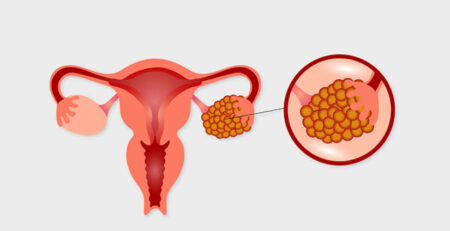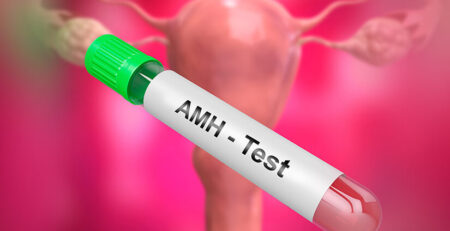Understand Why Hysteroscopy is Done Before IVF
In the world of assisted reproductive technology, in-vitro fertilization (IVF) is a light of hope for numerous couples trying to conceive. However, the success of an IVF cycle lies in a delicate balance between two key factors: the embryo and the uterus lining. A healthy embryo with strong potential needs a receptive and nurturing environment within the uterus for implantation and growth. But how could you know if the uterus lining is healthy enough for embryo implantation? This is where hysteroscopy can play a crucial role in optimizing the success of IVF cycles.
So, if you are considering IVF treatment and your doctor has suggested you undergo hysteroscopy before IVF, read this blog.
What is Hysteroscopy and How is it Performed?
Before proceeding, it’s crucial to grasp the concept of hysteroscopy.
Hysteroscopy is like a sneak peek into the uterus. During the procedure, a tiny camera is gently inserted into the uterus through the cervix. Don’t worry; there are no cuts or stitches involved. This camera allows IVF doctors in Delhi to see clearly within the uterus. To make you comfortable, a little numbing medication is frequently administered.
A special sterile fluid expands your uterine cavity to get the best view possible. This makes it easier to spot any unexpected abnormalities. The best part about the procedure is you do not need to stay at the hospital overnight; recovery is very fast, and there is less pain.
Why is Hysteroscopy Done?
The primary purpose of hysteroscopy before IVF is to detect any abnormalities within the uterus that could hinder implantation, the process where an embryo attaches to the uterine lining. These abnormalities can include:
Polyp: Sometimes, the inner layer, the endometrium, can grow too much. This overgrowth can lead to problems like bleeding between periods, super heavy periods, and even trouble getting pregnant.
Too much endometrium can block the way of sperm and embryos and make it hard for them to reach their destination. Plus, all that extra tissue can mess with the uterus, making it tough for the embryo to stick around and grow.
The treatment? Hysteroscopy before IVF treatment helps to detect and remove this extra growth.
Fibroids: Fibroids are tiny growths that reside in the muscular walls of your uterus. They resemble microscopic, non-cancerous tumours in three forms: subserosal, intramural, and submucosal. Because they alter the shape of your uterus, they can cause bleeding and make it difficult to conceive a child.
But do not be afraid! There is a technique for eliminating these unwanted guests. If you have subserosal or intramural fibroids, surgeons can remove them using a procedure known as laparoscopic surgery. And for those persistent submucosal fibroids harming your uterus, hysteroscopy is there to eliminate them.
Uterine Septum: Sometimes, an unexpected divider splits the uterus into two parts, either partially or completely, which causes some trouble, like reducing the chance of getting pregnant, having miscarriages, or giving birth too early.
But here’s the good news: there is a way to deal with it. Your IVF doctor in Delhi will perform hysteroscopic transcervical resection of the septum to gently remove that divider to make your uterus a more welcoming and comfortable space for a baby to grow.
Uterine Adhesions: Uterine adhesions are the scar tissue inside the uterus. Sometimes, they are thin and fragile, like tiny strings, and other times, they can be thicker and more serious, even blocking part or all of the uterus. This scarring often happens after surgeries, infections, or uterine lining injuries.
Thanks to hysteroscopy. It helps to sneak out these scars.
Role of Hysteroscopy Before IVF
Even though hysteroscopy isn’t needed every time you try IVF, there are times when it can really make a big difference:
Repeated IVF Failures: Recurrent implantation failures can be incredibly disheartening for couples undergoing IVF treatment, especially when good-quality embryos fail to attach to the uterine wall even after successful attempts. This failure can occur either due to embryonic factors or issues within the uterus. While the quality of embryos is assessed carefully through microscopic examination and preimplantation genetic screening, sometimes uterine receptivity poses a significant challenge.
Minor pathologies that could also be the culprit behind IVF treatment failures often escape detection through sonography (TVS) alone. In that case, hysteroscopy comes as a game-changer in the realm of fertility treatment. This procedure offers a direct, close-up look at the uterine cavity, allowing for the detection and treatment of small yet harmful issues such as inflammation, adhesions, or undiagnosed polyps.
By identifying and addressing these intrauterine issues behind implantation failure, hysteroscopy not only enhances the chances of successful implantation but also provides hope and reassurance to those navigating the complexities of assisted reproduction. Hysteroscopy is like shining a spotlight on the hidden hurdles, clearing the path for the much-awaited journey to parenthood.
Abnormal Ultrasound Findings: When it comes to checking out your baby-making gear, transvaginal ultrasound (TVS) or 3D ultrasound is like the first glance, giving your IVF doctor in Delhi a basic idea of what’s going on in your uterus. But sometimes, you can’t see the complexities properly. This is when hysteroscopy comes into play.
Hysteroscopy before IVF allows your doctors to observe these abnormalities up close and personal, making it simpler to determine what’s causing them and how to treat them. So, suppose your 3D ultrasound reveals anything unusual about your endometrial lining. In that case, hysteroscopy gives you the best chance of making your baby’s dream a reality.
Thin Endometrium: A thin uterine lining might hinder effective implantation during pregnancy. When transvaginal ultrasonography (TVS) consistently shows a thin endometrium, it might signal underlying problems with the uterine environment’s receptivity to implantation.
In such cases, hysteroscopy before IVF can be utilized to explore the uterine cavity and identify any potential causes for the thin lining, such as scar tissue, polyps, or adhesions. By visually examining the uterine lining directly, hysteroscopy offers a comprehensive assessment that ultrasound alone may not provide.
Additionally, if any abnormalities are found during the procedure, they can often be treated simultaneously, potentially improving the endometrial receptivity and increasing the chances of successful implantation during IVF treatment and pregnancy. Overall, hysteroscopy serves as a valuable diagnostic and therapeutic tool in addressing issues related to thin endometrium, ultimately enhancing fertility outcomes for individuals seeking to conceive.
Suspected Uterine Infection: Certain infections can threaten successful implantation and may not always be detectable through ultrasound alone. Hysteroscopy before IVF offers a valuable advantage in such cases by enabling the collection of tissue samples from the uterine lining for further analysis. These samples, including tuberculosis, chlamydia, and mycoplasma, can be examined for infectious agents or abnormalities that could compromise the uterine environment and affect implantation.
By identifying and addressing these underlying issues, hysteroscopy plays a crucial role in ruling out infectious causes of implantation failure and optimizing the conditions for successful pregnancy. It offers both diagnostic insight and the opportunity for targeted treatment, ultimately enhancing the chances of conception and healthy pregnancy.
Does Everyone Need a Hysteroscopy Before Every IVF Cycle?
No, it is not always required. A hysteroscopy before IVF treatment may be avoided if a good 3D ultrasound reveals a healthy uterine lining. However, it is suggested in some cases:
Previous Miscarriages: For couples who have had multiple pregnancy losses for no apparent cause, a hysteroscopy can identify underlying abnormalities in the uterus, allowing for specialized treatment and renewed hope for a healthy pregnancy.
Uterine Surgery History: If you have had surgeries like fibroid removal or C-sections that could lead to scars, hysteroscopy checks for those scar tissues or adhesions hidden in your uterus, ensuring a smooth IVF treatment journey.
Clear Uterine Finding: When 2D or 3D ultrasounds overlook hidden uterine abnormalities, hysteroscopy acts as a super detective, delivering a close-up, high-definition image to understand better what’s going on inside.
Are There Any Risks Related to Hysteroscopy?
While hysteroscopy is the safest procedure, like any medical intervention, it may carry some risks. These risks may include:
Infection: Although rare, there is a chance of infection with a hysteroscopy procedure. But don’t worry! With proper sterilisation techniques, the risk can be reduced.
Bleeding: After the procedure, you may experience some spotting or light bleeding. This is normal and subsides on its own.
Cervical Injury: Cervical dilation can infrequently result in tiny tears.
Uterine Perforation: This is an extremely unusual incident in which the hysteroscope punctures the uterus wall.
Conclusion!
Hysteroscopy is an important step in the route to parenthood through IVF. Hysteroscopy before IVF contributes to an optimum condition for embryo implantation and pregnancy by giving a thorough examination of the uterus cavity and correcting any underlying problems.
If you are battling with infertility issues and looking for IVF treatment, consult with Dr Rhythm Gupta. She will help you identify and address the causes of infertility. So, why wait? Schedule your consultation and achieve your dream of parenthood.












